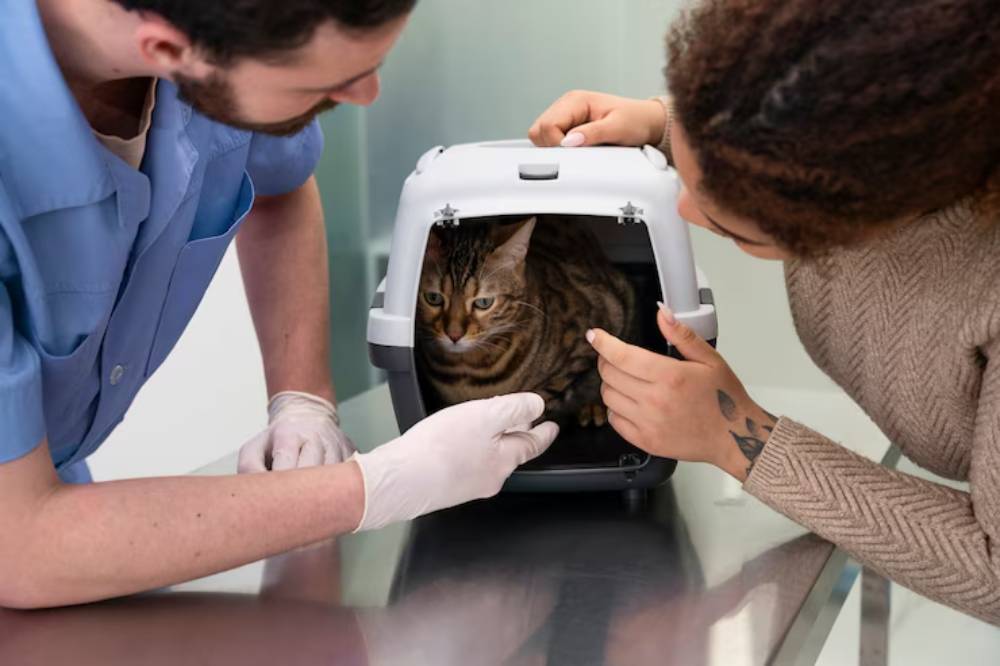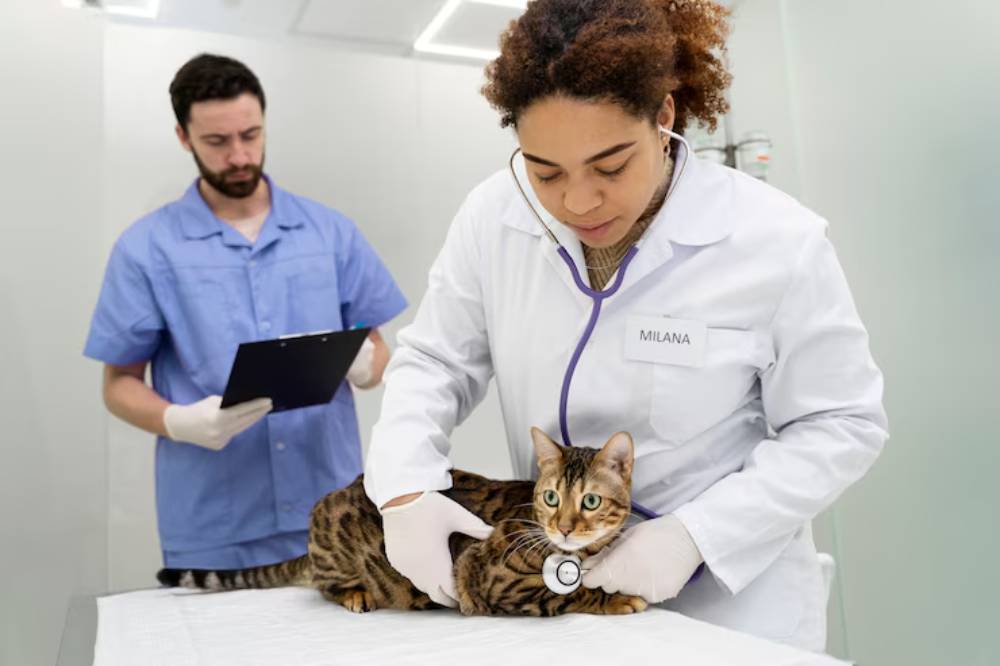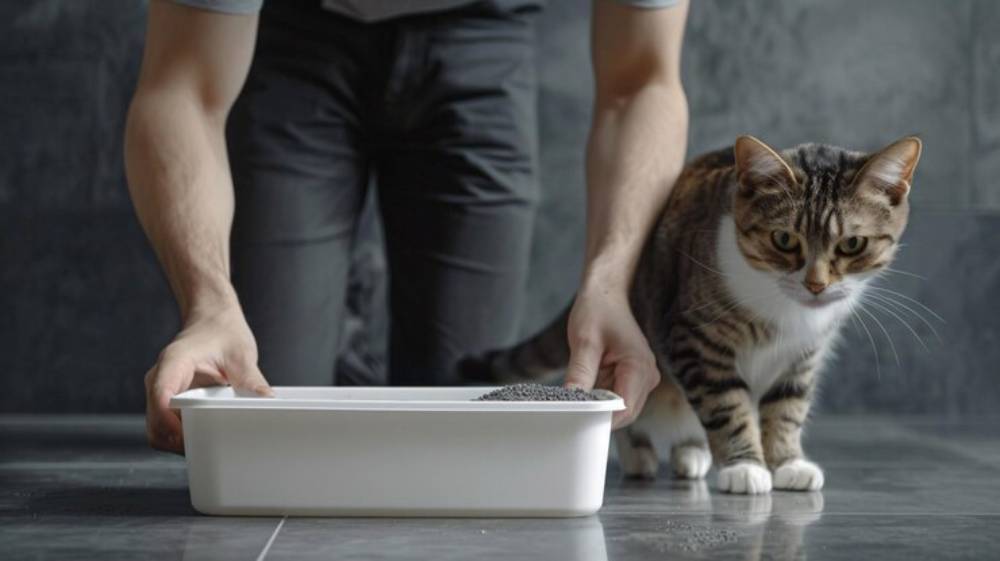
Medical Reasons Behind Litter Box Avoidance
There’s nothing quite as disheartening as finding a wet patch on the rug or a hidden poo behind the sofa—especially when your cat knows where their litter box is. For many owners, the first reaction is frustration. But what if your cat’s sudden change in toilet habits isn’t a behaviour problem at all? What if it’s a medical cry for help?
Litter box avoidance is often one of the earliest signs of a health issue. Cats are masters at hiding discomfort, so changes in their toileting habits can be one of the few ways they show something’s wrong.
This guide will explore the medical causes of litter box avoidance, focusing on cat urinary issues, other common feline health problems, and how to help. If you’ve ever whispered “why are you doing this?” to your furry friend while scrubbing the floor, this post is for you.
Understanding the Medical Side
The Hidden World of Feline Discomfort
Unlike dogs, cats won’t usually cry out when something hurts. Instead, they quietly change their behaviour—avoiding stairs, becoming withdrawn, or, yes, missing the litter box.
If your cat is urinating or defecating outside the box, don’t assume it’s behavioural right away. Rule out medical causes first. Many litter issues are linked to genuine health problems that can cause pain, urgency, or even fear of the litter tray.
The Importance of a Vet Visit

Too often, owners try new litter brands, fancy trays, or scold their cats—when what’s needed is a quick visit to the vet.
- A routine check-up can reveal infections, bladder crystals, arthritis, or other conditions.
- Early detection of urinary issues can be life-saving, especially in male cats.
As uncomfortable as it might be to scoop poop off the floor, it’s often your first clue that your cat is trying to say, “Help me.”
Common Medical Causes of Litter Box Avoidance
Let’s dig into the most common culprits concerning health-driven toilet troubles.
1. Urinary Tract Infections (UTIS)
UTIS are one of the top causes of inappropriate urination in cats, particularly older or female felines.
Symptoms to watch for:
- Straining or crying while urinating
- Frequent trips to the litter tray with little output
- Blood in the urine
- Urinating in strange places (bathtubs, sinks, beds)
Why it causes avoidance: The pain during urination can make your cat associate the litter box with discomfort, leading them to try different locations in search of relief.
2. Feline Lower Urinary Tract Disease (FLUTD)
FLUTD is a broader term covering a range of urinary issues, including:
- Bladder inflammation (cystitis)
- Urinary crystals or stones
- Urethral obstruction (a medical emergency in males)
FLUTD signs include:
- Licking the genital area excessively
- Crying out in pain
- Squatting outside the box
- Lethargy and hiding
FLUTD can become life-threatening quickly, especially in neutered male cats. If your cat is straining and not producing urine, get to a vet immediately.
3. Kidney Disease
Chronic kidney disease is common in older cats and can cause increased urination and thirst.
What you might notice:
- Larger urine clumps in the tray (or outside it)
- Dehydration and weight loss
- Urinating in unusual places due to urgency
As kidneys lose function, your cat might not make it to the box in time or simply forget where it is due to cognitive decline.
4. Diabetes
Like kidney disease, feline diabetes leads to excessive urination. This increased volume can overwhelm your cat’s bladder control or cause them to seek alternative spots.
Clues that diabetes might be the cause:
- Constant thirst
- Frequent, large urination
- Weight loss despite a big appetite
Don’t ignore a sudden change in your cat’s drinking habits—it’s often the first red flag.
5. Arthritis and Mobility Issues
Older cats or those with joint issues may struggle to access a high-sided or awkwardly placed litter box.
Look for these signs:
- Reluctance to jump or climb
- Avoiding stairs
- Stiffness after rest
If reaching the tray causes pain, your cat may choose the path of least resistance—your carpet.
Fix: Switch to a low-sided, easily accessible box placed on the same floor your cat frequents most.
Other Health Concerns That Can Impact Litter Box Habits
Cognitive Dysfunction (Feline Dementia)
Just like humans, cats can develop age-related cognitive issues. They might forget where the litter box is or become disoriented in familiar surroundings.
- Wandering or yowling at night
- Soiling near the box but not inside it
- General confusion
Constipation or Gastrointestinal Trouble
If it’s not urination but defecation that’s the problem, consider issues like constipation or food intolerance.
- Hard, dry stools
- Vomiting or reduced appetite
- Straining in or around the box
Constipated cats may associate the box with pain and begin avoiding it altogether.
What You Can Do: Practical Steps for Pet Parents

Step 1: Schedule a Veterinary Examination
Always start with a vet check-up if your cat’s toileting habits change suddenly.
Be ready to discuss:
- Changes in diet, routine, or behaviour
- Frequency and appearance of urination/defecation
- When the issue began
Your vet may recommend:
- Urine tests or blood panels
- X-rays or ultrasounds
- Special diets or medications
Step 2: Adjust the Litter Box Setup

If your cat is dealing with pain or mobility issues:
- Use a box with low sides
- Keep it in a quiet, accessible location
- Avoid scented litter, which can be off-putting for sensitive noses
- Scoop daily to keep it clean and inviting
For senior cats or those with arthritis, a ramp or wide entry can make a difference.
Step 3: Monitor Behaviour Closely
Keep a log of your cat’s habits:
- Where they’re going instead of the tray
- Their eating, drinking, and grooming habits
- Mood changes or physical symptoms
This information can be invaluable to your vet and help spot patterns you might otherwise miss.
Step 4: Explore Specialist Support
If your cat’s issue turns out to be complex or recurring, don’t hesitate to ask your vet about:
- Referral to a feline behaviourist
- Pain management options for arthritis
- Prescription urinary diets
From Carpet to Comfort
Emma, a cat mum from Leeds, noticed her 10-year-old Siamese, Bella, was peeing just outside the litter tray every morning. At first, she thought Bella was being picky about the litter type. But after a quick vet visit, Bella was diagnosed with early-stage arthritis.
Emma switched to a shallow-entry tray and placed it on the same floor as Bella’s favourite snoozing spot. She also added a joint supplement to her diet. Within a week, no more accidents—and a much happier, more mobile kitty.
Listen With Your Eyes (and Nose)
When your cat avoids the litter box, it can feel like a personal betrayal, especially if they were previously well-trained. But beneath the frustration lies a more profound truth: your cat might be unwell, not unruly.
Key takeaways:
- Always rule out medical causes before assuming bad behaviour.
- Cat urinary issues and joint pain are leading contributors to litter problems.
- Early intervention can prevent bigger health complications.
- Your cat can return to its usual tidy self with proper care.
Have you noticed changes in your cat’s litter habits? Don’t write it off—take it seriously. A quick vet visit could spare your cat discomfort and help you understand it better.
If this post helped you, share it with a fellow cat lover or subscribe for more practical pet care tips. Our cats can’t speak, but with the proper knowledge, we can listen.


